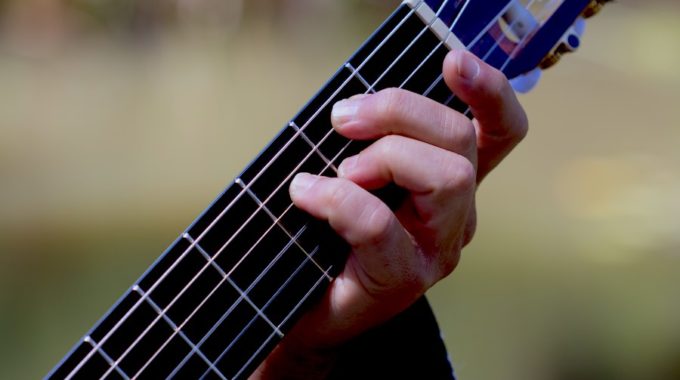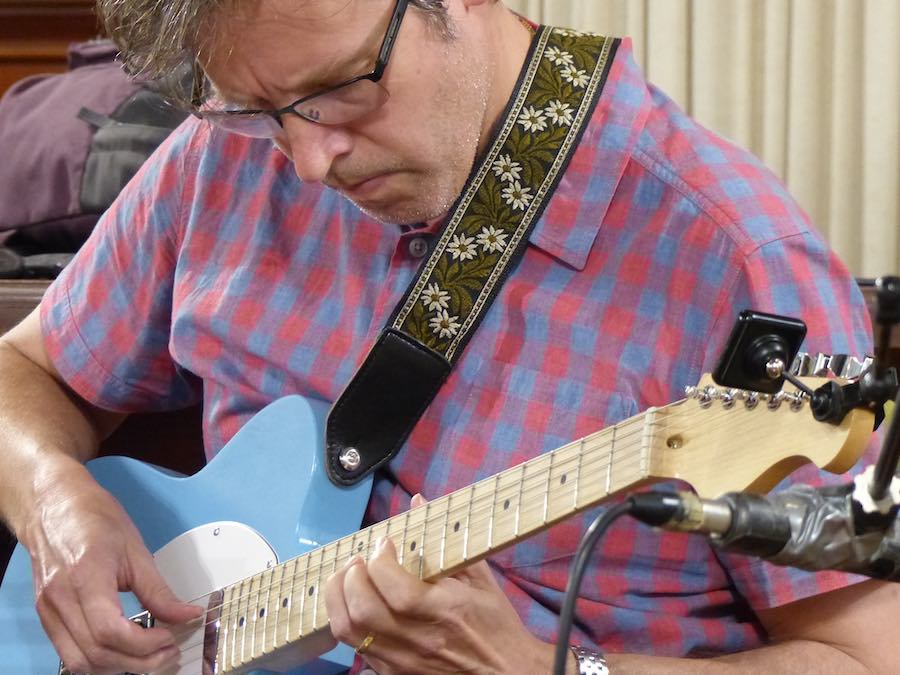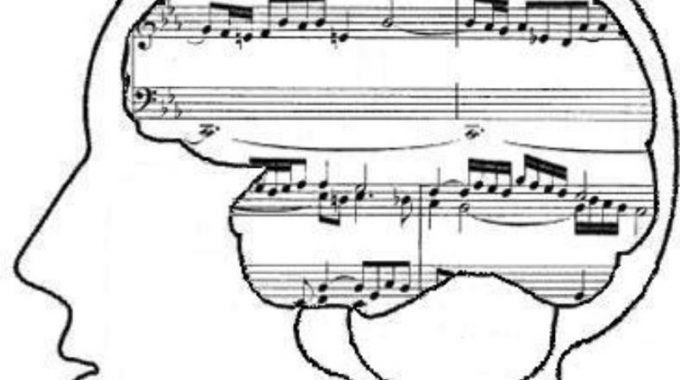Here are some valuable tips for individuals who struggle with memorizing music and experience anxiety…

Guitar Technique How to Develop
Mastering Guitar Technique: Developing Skills Through Sound vs. Visual Cues
Guitar technique is an integral aspect of the continuous coordination required to learn how to produce music on the guitar. You can enhance your technique through repetitive mechanical movements or by positioning your fingers on frets and strings in response to the auditory image in your mind.
The distinction between these two approaches lies in avoiding monotony, discomfort, and frustration. It is indeed more logical to place your fingers based on the sound you envision in your head rather than relying solely on visual cues to guess the location of the desired sound.
Sing & Play
Is this difficult to achieve? No, it isn’t. In fact, playing the guitar this way is not only easier but also more rewarding. However, you must immerse yourself in the realm of singing. Don’t worry; we all have the capacity to sing. It doesn’t matter if you’re perfectly in tune. The rule is simple: if you can sing it, you can play it. If you can’t sing it, you’ll be stuck in unnecessary repetition.
Initially, this may involve a slow learning process, but the satisfaction you’ll experience will motivate you to practice for hours on end. You’ll start to hear what you’re doing and anticipate where to place your fingers to achieve the desired sound.
But how do you begin singing if you’ve never done it before? How can you sing and then translate that into guitar sounds?
It’s actually much easier to sing a sound and then find it on the guitar than to memorize the sounds solely by placing your fingers on the instrument.
Melody Mastery
I propose a simple yet effective method for learning melodies, which I call the L.I.S.P. approach:
L: Listen I: Imagine S: Sing P: Play
With a consistent tempo as the foundation, I instruct my students to listen to melodic fragments, imagine them within the tempo, sing them, and then play them on their instruments.
Simultaneously, I guide my guitar students in understanding the fretboard, showing them where these sounds can be located. I teach them to recognize these sounds in relation to the musical center, enabling them to perceive how the sounds relate to one another and to the chords. Consequently, they learn to sense the sound’s location.
We focus on playing music in time, singing the sound, and all the while, we use mechanical movements and guitar techniques to find, play, and bring forth the musical passages.
Musical Clarity: Articulation
To articulate correctly is to help deliver musical passages with clarity. As a guitarist, we must become attuned to the lyrical quality of music and understand how it relates to our instrument, our guitar technique. Once again, if we can sing a melodic passage, we have the fundamental element to connect with and replicate.
When we sing, we can produce long notes, short notes, loud notes, and soft notes. In musical terms, we categorize these as legato, staccato, and dynamics.
If you are just starting out on the guitar, it’s essential to appreciate the lyrical nature of music and strive to perform all passages in this manner from the beginning. However, it’s only through structured, repetitive practice that you will develop the guitar technique needed to achieve your desired goals.
At my Music School, you will consistently work on enhancing your guitar technique in all guitar courses. Your technique will also evolve based on the style you choose, whether it’s acoustic guitar, blues guitar, jazz guitar, or flamenco guitar.
Mastering Guitar: A Personal Journey of Technique and Expression
Starting on the guitar is a gradual learning process, but it’s also a personal journey where we can express our emotions and escape from daily life. I strongly recommend making music every day, practicing with kindness rather than harsh self-judgment, embracing our limitations, and venturing into the unexplored world of music.
The more melodies you learn and the more songs you can play, the better your technique will become.
However, to make sense of it all, guitar students must acquire a comprehensive understanding of chords, scales, and chord-scale relationships, both in triad and seventh harmonic contexts.
At the Creative Guitar School, ( also available through the online learning program ) students at all levels develop a strong guitar technique, whether using a pick or fingerstyle. I will gradually introduce exercises to help you articulate fast and slow passages with clarity. You will also explore solo guitar, where the guitar requires no accompaniment, allowing you to play both the accompaniment and melody simultaneously.
Students delve into various guitar styles such as blues, jazz, folk, and flamenco. Since guitar technique is a direct result of what you can hear, students quickly grasp the L.I.S.P. concept and progress rapidly when they maintain discipline in their learning.
Music learning demands daily training and repetition. I strongly advise against practicing beyond the point of discomfort and recommend always being able to play a song from start to finish on the guitar as part of your musical practice.

Guitar Learning and Sharing
I offer advanced guitar courses through one-on-one sessions and my regularly held masterclasses in Australia. I recommend studying levels 1 and 2 in a group setting. As a guitar teacher, I emphasize the benefits of group learning because it provides the opportunity to observe how others approach their learning journey, leading to a more fulfilling overall experience.
When you are just starting to play the guitar, you will undoubtedly experience great satisfaction, but you may also encounter moments of frustration. In both of these instances, sharing your concerns and successes with others can be an immensely rewarding musical experience.
Summary of Key Guitar Learning Principles
In summary, the following principles highlight the significance of auditory imagination, singing, and proper articulation in guitar learning. They stress the benefits of group learning and consistent practice for aspiring guitarists.
- Technique Enhancement: Focusing on auditory imagination alongside visual cues is crucial for refining guitar technique, preventing monotony and frustration.
- Sing & Play Method: Integrating singing with guitar playing is recommended for a more rewarding learning experience, emphasizing that anyone can learn to sing and that singing aids in playing.
- Melody Mastery (L.I.S.P. Approach): The L.I.S.P. approach (Listen, Imagine, Sing, Play) is an effective method for mastering melodies, emphasizing listening, timing, and mechanical movements.
- Articulation and Clarity: Proper articulation, including legato, staccato, and dynamics, enhances musical clarity, bridging the gap between lyrical qualities and guitar technique.
- Personal Journey: Learning the guitar is a gradual, personal journey that offers emotional expression and an escape from daily life. It requires consistent practice, self-kindness, and understanding of chords and scales.
- Group Learning: Group learning is recommended for beginner guitarists, providing opportunities to observe others’ learning styles and share experiences.


